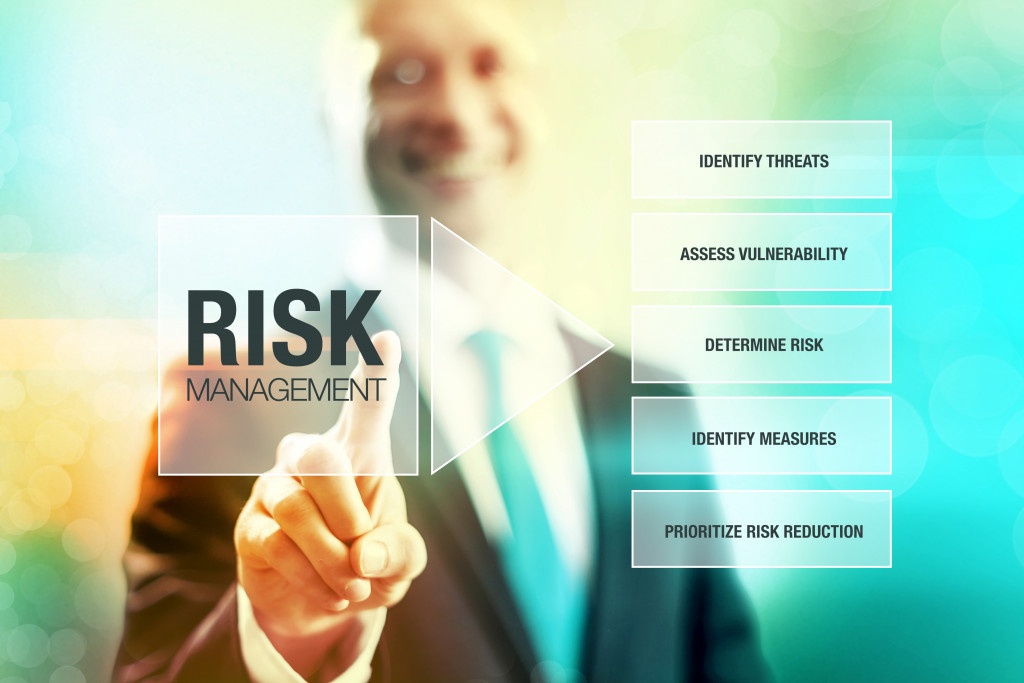Our modern use of the word ‘entrepreneur’ dates back to the 16th century, from a French root enterprendre meaning ‘undertaker.’ Not the type who works funerals, but in the sense of “one who undertakes.”
Specifically, entrepreneurs undertake being self-employed in the face of returns that aren’t guaranteed. Thus, for at least three hundred years, we’ve known that venturing into business entails dealing with uncertainty and risk. Yet at the level of small-to-medium enterprises, many entrepreneurs today still tend to wing it or play things by ear.
Being an entrepreneur will surely require you to learn many diverse skills, but it’s never too early to add risk management to the list. Doing so can spell the difference between success and failure for your business.
The gut can go wrong
To clarify, it’s highly unlikely that anyone goes into business without understanding and accepting that the level of risk is higher than simply getting a job. But a high risk tolerance, on its own, merely makes you intrepid.
Business complexity increases exponentially with the number of nodes or potential interactions between elements. Even a small business with a handful of employees will be too complex for a single person to control everything and foresee outcomes in every aspect. You always leave certain things up to chance. The difference lies in how you weigh and play those odds.
Several studies have shown that when it comes to handling risk, SMEs tend to be run differently. Management tends to have a more strategic approach as the size of the business increases. In contrast, the founders and leaders of SMEs are more likely to be informal, making decisions based on gut feel, or not evaluating every aspect of potential risk.
Fearlessness may seem admirable, but only when paired with success. And sometimes, that very appetite for risk-taking can be what leads you to take unwise actions.
Considering strategic risk

Suppose your business relies heavily on computing power. You’re thinking about getting an uninterruptible power supply similar to what data centers use. In this decision, you don’t use cost-benefit analysis. The cost of energy consumption is easy to calculate, but the benefit, which is the ability to keep running critical applications during a power outage, is harder to quantify.
No electric utility will guarantee that their grid never goes down. There will be occasional emergency maintenance needs. Sometimes, especially in this age of climate change, extreme weather disrupts the most stable of services. It’s a matter of when, not if, a blackout happens. So how valuable is uptime to your business?
There’s no one-size-fits-all answer to that. If you’re running a communications center, you risk losing money every minute during an outage as client contacts go unanswered or routed off to rival centers. But at least you’re not going to risk getting sued for the failure of critical life-support equipment, which could happen if you’re a medical facility.
What really matters is that leadership in SMEs should think long and hard about such risks. They quantify them as far as possible. Then they extend that same sort of strategic thinking to other aspects of the business. That could be anything from the financial risks of taking on a loan or a new project to cybersecurity and workplace safety, supply chain vulnerability, or brand reputation management.
Playing the percentages
In essence, the strategic approach means conducting risk analysis by identifying as many threats as you can, both internal and external. Then, you have to plan for possible scenarios and what measures to take in each case.
You’ll never be able to map out every potential risk or outcome. The pandemic has recently reminded us all of that. Even big businesses that take risk management seriously were unprepared in many ways to enforce extended stay-at-home orders. The rush to remote work was largely done on the fly.
But what this does help you to achieve is shifting the odds even slightly in your favor. It’s always a game of percentages. A fractional improvement in how you handle things, avoiding unnecessary risks, or taking calculated gambles that could really pay off, can go a long way.
Frequently quoted statistics about the failure rate for SMEs estimate it to be 20% in the first year, going up to 50% over five years. Research tells us that strategic management is not only possible for SMEs, but it definitely improves their competitiveness and financial health. Even if you don’t have the capability to employ a risk management professional, you can start boosting your survival chances with this change in approach.

